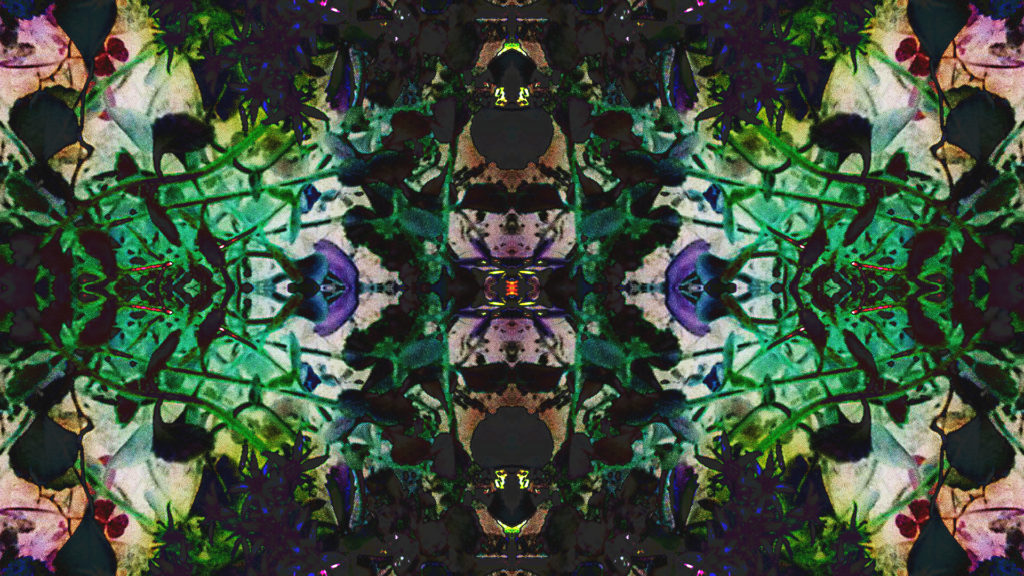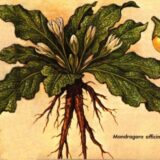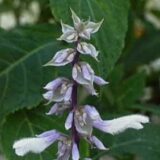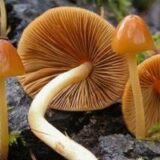Table of Contents
Hallucinogens and Psychedelic Plants and Substances

A Basic Understanding and History of Hallucinogens
Hallucinogenic plant use is a huge part of human culture and human history alike. The consciousness-exploring and mind-expanding substances present in plants growing around the globe have been used and enjoyed by countless cultures throughout time. Ironically, despite Native American populations enjoying psychoactive and hallucinogenic plants for countless centuries, modern Western society has only recently begun to divulge and crack open the mystical world which is psychoactives, hallucinogenics and other ethnobotanicals. There has been an especially large growth in the last 3-4 decades, especially in the United States.
It is interesting to note that the chemical composition and production of most hallucinogenic and psychoactive plants has yet to be mapped out and fully understood…however, they still remain a centerpiece fixation of the modern drug culture. Despite not fully understanding these plants, some of the chemical compounds are understood and are well known to induce altered perceptions, even visual, auditory or which can be felt by the touch. There are even instances where the sense of smell (olfactory) and the sense of taste (gustatory); e.g. just as the stereotypical desert hallucination would show a tired, mouth-dry traveler seeing, cutting into and enjoying the water of a bulbous, juicy cactus, only to find that it is all a hallucination, even the taste. Hallucinations can be seen, heard, felt, smelt and tasted. Knowing this, some shamanism practices involve inducing these altered states of consciousness in order to experience these hallucinations in order to receive divinatory guidance, visions, or for recreational purposes.
 In fact, many of the hallucinogenic plants in this world have been a critical part of religious ceremonies or rites of some sort or another…especially in the earlier civilizations. Early societies saw hallucinations as a way to connect with the spirit world, talk to the dead, receive communication and messages from the Gods, and explore other psychic elements. Some shamans and similar spiritualists, as well as recreational users throughout history, report experiencing entirely different worlds. Still, many civilizations to this very day uphold use of hallucinogenic plants in rituals, for divinatory purposes, or for healing purposes (usually for a specific ailment or to cleanse the body). Hallucinogens are used recreationally in modern society as well…allowing the modern user to free themselves from the shackles on the mind. The internet has provided wider spread availability to information about and access to hallucinogenic plants. All of the detailed information about hallucinogens and the like has inspired a plethora of people to research, experiment with, engage and indulge in the use of hallucinogens. Due to the surplus of modern day researchers, much of the mechanics behind how hallucinogens work and what effects to expect, is quite worked out.
In fact, many of the hallucinogenic plants in this world have been a critical part of religious ceremonies or rites of some sort or another…especially in the earlier civilizations. Early societies saw hallucinations as a way to connect with the spirit world, talk to the dead, receive communication and messages from the Gods, and explore other psychic elements. Some shamans and similar spiritualists, as well as recreational users throughout history, report experiencing entirely different worlds. Still, many civilizations to this very day uphold use of hallucinogenic plants in rituals, for divinatory purposes, or for healing purposes (usually for a specific ailment or to cleanse the body). Hallucinogens are used recreationally in modern society as well…allowing the modern user to free themselves from the shackles on the mind. The internet has provided wider spread availability to information about and access to hallucinogenic plants. All of the detailed information about hallucinogens and the like has inspired a plethora of people to research, experiment with, engage and indulge in the use of hallucinogens. Due to the surplus of modern day researchers, much of the mechanics behind how hallucinogens work and what effects to expect, is quite worked out.
The use of hallucinogens is recorded all throughout history, being referenced as used in both religious ceremonial rituals and recreational purposes. It is interesting to note, however, that the Greek origin of the word Toxic ultimately comes from the word “bow,” essentially suggesting through a little historical word-forensics that poisonous arrows come from toxic plants. In fact, modern culture popularly uses the term “intoxicated” to represent one who is inebriated due to the effects of alcohol, however, the term intoxication actually occurs from the intoxicating effects from any toxic substances. It is noted throughout history by many prominent individuals, including Paracelsus (1500s), that with nearly all plants and things, comes some sort of poison or toxin when in large enough quantities. The heaviest point being that the difference between a substance being a poison, medicine or narcotic, is simply the dosage. There are several medicines capable of killing in high doses which save lives in hospitals every day in low doses. Because hallucinogens cause intoxicating effects, they are classified as toxic. Still, this doesn’t mean they are not enjoyed and in continued use.
 Hallucinogens do not come in one particular shape, color or size, nor do they all produce the same effects. There are many types of hallucinogens. The most popular and well-known definition of a hallucinogen would be a substance that produces visual hallucinations such as colors or melting walls; however, the truth is: all of the body’s 5 senses are subject to hallucinations. Depending upon the plant or substance’s hallucinogenic properties, different types of hallucinations may occur. And very typically a plant will produce not one, but a number of different hallucinations. For example, the Peyote cactus is capable of producing a variety of different types of hallucinations across multiple senses. Marijuana is also capable of producing multiple types of hallucinations, sometimes all at once. A substance does not have to produce visual hallucinations in order to be classified as a hallucinogen, in fact, a lot of times a user does not even realize a hallucination is occurring at all! Truly, however, the term hallucinogen cannot be an all inclusive way to describe any particular plant or substance. In other words, there are many terms which are commonly used to insinuate, classify or otherwise describe the effects of a plant, but none of them will typically be able to encompass all of a plants effects. Nevertheless, some of these terms include (besides hallucinogens): ethnobotanicals, entheogens, deliriants, delusionogens, mysticomimetics, phanerothymes, phantasticants, psychotica, pscyhoticants, psychogens, psychosomimetics, pscyhodysleptics, psychotogens, schizogens, and psychedelics. Some of these terms are cultural based, such as psychedelics being commonly used in the United States, while phantastica is typically used in Europe and Australia. Some of these terms are used to describe a particular type of hallucination, of which may not be easily detected; such as psychotomimetic indicating a plant induces a psychotic-like state.
Hallucinogens do not come in one particular shape, color or size, nor do they all produce the same effects. There are many types of hallucinogens. The most popular and well-known definition of a hallucinogen would be a substance that produces visual hallucinations such as colors or melting walls; however, the truth is: all of the body’s 5 senses are subject to hallucinations. Depending upon the plant or substance’s hallucinogenic properties, different types of hallucinations may occur. And very typically a plant will produce not one, but a number of different hallucinations. For example, the Peyote cactus is capable of producing a variety of different types of hallucinations across multiple senses. Marijuana is also capable of producing multiple types of hallucinations, sometimes all at once. A substance does not have to produce visual hallucinations in order to be classified as a hallucinogen, in fact, a lot of times a user does not even realize a hallucination is occurring at all! Truly, however, the term hallucinogen cannot be an all inclusive way to describe any particular plant or substance. In other words, there are many terms which are commonly used to insinuate, classify or otherwise describe the effects of a plant, but none of them will typically be able to encompass all of a plants effects. Nevertheless, some of these terms include (besides hallucinogens): ethnobotanicals, entheogens, deliriants, delusionogens, mysticomimetics, phanerothymes, phantasticants, psychotica, pscyhoticants, psychogens, psychosomimetics, pscyhodysleptics, psychotogens, schizogens, and psychedelics. Some of these terms are cultural based, such as psychedelics being commonly used in the United States, while phantastica is typically used in Europe and Australia. Some of these terms are used to describe a particular type of hallucination, of which may not be easily detected; such as psychotomimetic indicating a plant induces a psychotic-like state.
In the most simplest sense, it is best put by Hoffer and Osmond in that hallucinogens produce changes in perception, thought, mood, with as little confusion, memory loss or disorientation of place and time as possible.
Classifications of Hallucinogens and Psychedelics
While there are many varying existing platforms of classifications of psychoactive plants and drugs…probably one of the most commonly accepted classification system for psychoactive drugs was devised by German toxicologist Louis Lewin, and later revised by Albert Hofmann. Hofmann ultimately divided the psychoactives up into 4 categories. The first category is called Analgesics and Euphorics. This category harbors drugs like Opium and Coca (source of Cocaine). The second category is called Sedatives and Tranquilizers, such as Reserpine. The third category is called Hypnotics, such as Kava-kava. And the fourth category is called Hallucinogens or Psychedelics and contains plants such as the Peyote cactus and Marijuana. While most of the hallucinogens derive from a plant or botanical nature, there are some which are extracted from animals (toads, fish, etc), and still some that are synthetically produced. Some popular synthetic hallucinogens include LSD, TMA, and DOB. Some hallucinogens can be found in a variety of sources, such as DMT (which is produced in varying quantities in plants, barks, animals and even human beings).
What Do Hallucinogens Do
While the first three groups typically only alter a user’s mood…the last category can significantly change the experience and senses of a user, as well as the perception of reality. The changes of perception can effect one’s consciousness as well as one’s understanding of current one’s space and time. It is possible for a hallucinogen to alter the stream of consciousness without the loss of consciousness. This means, the user can enter a dream-like state which can often appear more real than the real world. While it is possible for the user to be aware of this dream-like state being a false reality, it can sometimes be psychologically challenging to defeat all forms of psychosis that a substance can induce. Still, people have enjoyed hallucinogens all over the world for thousands of years and report outstanding trips. Some hallucinogens create brilliant color perception and a vibrantly attractive world. Sometimes, objects and commonly understood symbols and beliefs can lose their meaning…other times, people report extreme epiphanies and consider the outcome of a trip “life changing,” waking up into a super motivated, or super devastated state. Hallucinogens can alter the state of consciousness to include hallucinations that can be seen, heard, felt, tasted and smelt.
Some hallucinogens allow for spiritual journeys which are commonly called “spirit walks” or even astral travel. This is why hallucinogens are so popular amongst shaman and in religious and ceremonial purposes. Historically, ancient leaders would rely upon the predictions of shaman under the influence of hallucinogens to make incredibly important wartime, diplomatic, political and economic decisions. In fact, these plants and substances have such an engrained involvement throughout the history of religion that it has been suggested and heavily supported that hallucinogens are responsible for the creation of the idea of God…and that the experiences of interaction with spiritual deities of any kind, have formed only as a result of the use of psychedelic substances. Whether the psychedelics created God, allow a user to talk to God, have a spiritual experience, or otherwise communicate with another world, there is no doubt that hallucinogens can change a person. There is very little way to predetermine how a hallucinogen will affect any particular person. The effects of using a hallucinogen can sometimes be extreme. Even experienced individuals can experience extreme psychosis. Thus, the power of the hallucinogen and psychedelic should always be respected!
How Do Hallucinogens Work

Hallucinogens are an interesting construct in that the magic all happens from a limited number of chemicals found within the plant material which interact with the human Central Nervous System (CNS). Typically, the experience is short-lived, only surviving as long as the chemical lasts in the body. The hallucination is essentially the body and mind responding to a low dose of the toxic effects of the causative agent. Most hallucinogenic chemicals are metabolized or excreted from the body fairly quickly, hence why most hallucinogenic effects do not last but a few hours…or in extreme circumstances, the better part of a day. While each substances is different, there are typically strengths and weaknesses in the levels of hallucinations. For example, LSD may provide some extreme visual hallucinations, very strong hallucinations, while at the same time producing some lighter, weaker pseudo-hallucinations (such as audible or olfactory [smell] oriented). Some hallucinations will always be more profound than others. Because visual hallucinations are so much more noticeable, memorable and provide the most vivid experience, they are often called “true hallucinations.” Some substances produce stronger true hallucinations than others. A strong Salvia divinorum, for example, allows a user to enter a trance which only lasts a few moments, but can simulate hours and hours immersed into a vivid and very real experience…another dream-like world where nearly anything is possible. Sometimes a user is lucid, sometimes a user has no control. Some experiences are pleasant, others are frantic or even feel demonic in nature.




